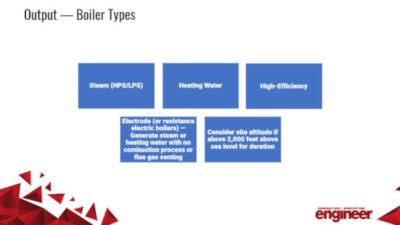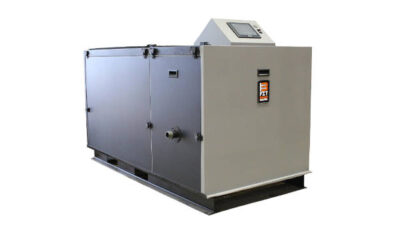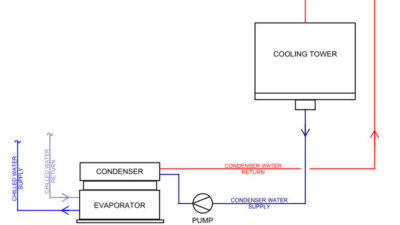ASHRAE 90.1, Appendix G, allowed a path for energy compliance for the Great River Medical Center.
Great River Medical Center in West Burlington, Iowa, was completed in 2000. This Energy Star 100 hospital-which has perhaps the lowest site energy-use index (EUI) of any hospital in the U.S. at 95 kBtu/sq ft/year-might not comply with the energy code for new buildings under ASHRAE 90.1-2013: Energy Standard for Buildings Except Low-Rise Residential Buildings or the 2015 International Energy Conservation Code (IECC). (Energy Star is a Department of Energy program that rates building energy use compared to similar buildings. The ranking of 100 means in the 100th percentile, or lowest energy use of all buildings of that type in the program.)
This greenfield replacement hospital is located on a 100-acre site and is heated and cooled by the second-largest lake-coupled geothermal system in the U.S. The system can produce more than 1,500 tons of cooling-enough energy to serve the equivalent of 500 single-family homes. More than 5,000 gal of water per minute (depending on load) move through a 100-mile-long piping system throughout the hospital and other buildings on the campus. Water passes through more than 800 heat pumps that help regulate temperatures in offices, patient rooms, and treatment rooms. Each patient room, and many of the offices and treatment rooms, have individual controls that maintain the room’s temperature to within four degrees of the setting.
The lake also is used for stormwater retention and lawn irrigation and provides a serene environment for patients.
Today, however, this project would not comply with some of the prescriptive provisions in ASHRAE 90.1-2013 or 2015 IECC, such as chilled-water pipe sizing, leaving the energy-cost budget method (ECB) in Section 11 as the only possible compliance path. In ECB, the baseline building system is mapped to the proposed building system and would include water-source heat pumps (WSHP) with the loop temperature maintained by a boiler and fluid cooler.
In this application, the WSHP system is fundamentally more efficient than a traditional variable air volume (VAV) reheat system, because of the high code-mandated minimum airflow rates that cause large amounts of reheat in the VAV system; whereas the heat pump system uses a dedicated outside-air system (DOAS) and almost never reheats air. Each heat pump either heats or cools, never both, or often the compressor is off and only the fan runs to distribute ventilation air. This is an efficient system, but far from standard practice in a large hospital. So, this extremely efficient hospital design, which is an Energy Star 100 building today, might not comply with the code without the change made to Appendix G in ASHRAE 90.1-2016.
This change allows Appendix G to be used as a path for compliance. Instead of basing the baseline HVAC system on the proposed design, the system is instead set at "normal" construction practice for each building type. In the case of a hospital, that would be a VAV reheat system with many zones’ constant-volume reheat based on minimum air-change requirements. Under Standard 90.1-2016 Appendix G, the Great River Medical Center would easily comply with the standard, as a current Energy Star 100 building should.
Jeff Boldt is a managing principal and director of innovation and quality at IMEG Corp. and a voting member of the ASHRAE 90.1 and 189.1 committees.
Michael Rosenberg, a senior research scientist at Pacific Northwest National Laboratory, has worked in the building energy field for more than 20 years upgrading building energy codes, training code officials and design professionals, designing high-performance buildings, analyzing complex building systems, and developing and administering beyond-code energy programs.
Acknowledgements: This article relied heavily on a presentation developed by co-author Michael Rosenberg and fellow SSPC-90.1 committee members Drake Erbe, Leonard Sciarra, Richard Lord, and Eric Richmond.
ONLINE
Learn more about ASHRAE 90.1 changes in an article linked below.



